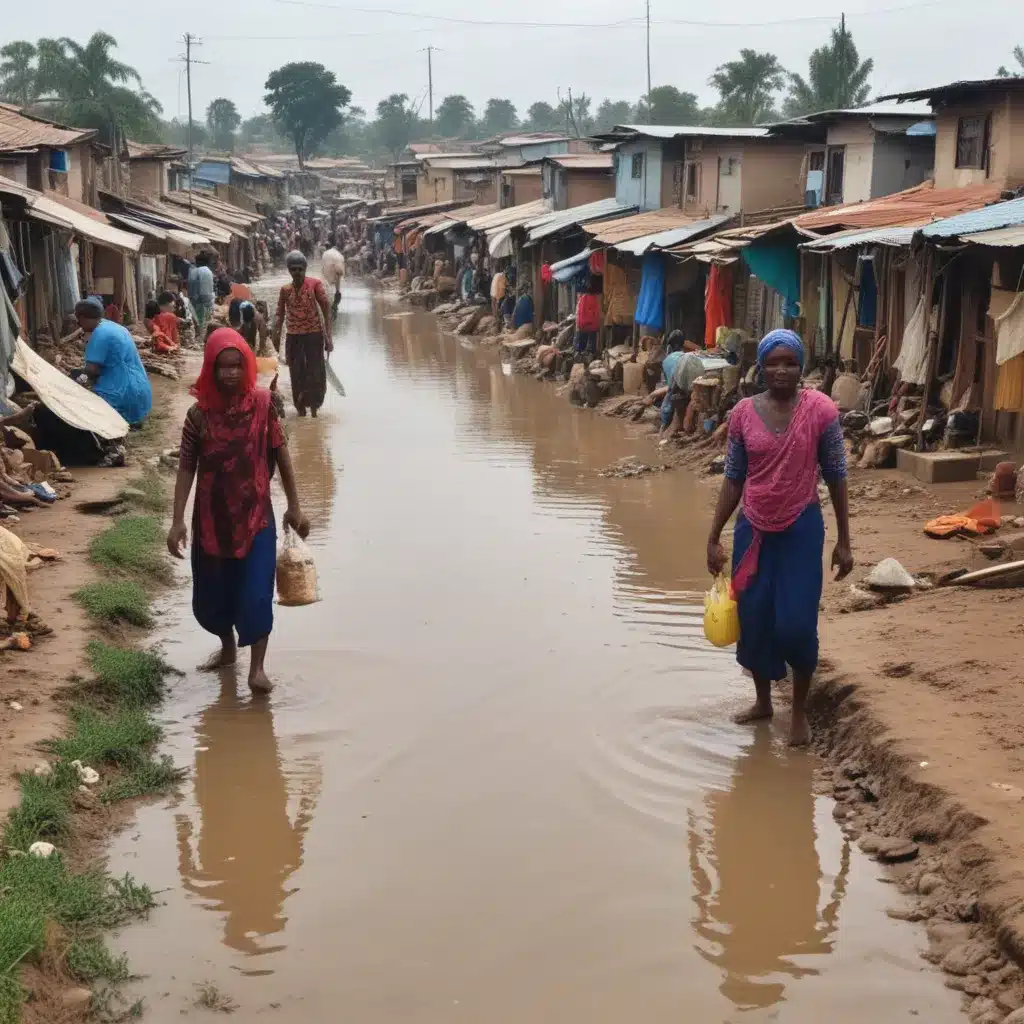
Informal settlements are often the most vulnerable to the devastating impacts of urban flooding, leaving marginalized communities with limited resources to withstand and recover from these events. However, strategic capacity building initiatives can empower residents and local authorities to enhance flood resilience in these high-risk areas. By integrating community-driven data collection, innovative flood control measures, and holistic water management strategies, we can work towards a more inclusive and sustainable approach to disaster risk reduction.
Now, this might seem counterintuitive…
Flood Risk Assessment
Accurate and up-to-date flood risk data is essential for informing effective interventions in informal settlements. Vulnerability mapping through participatory processes can help capture local knowledge and on-the-ground realities that are often missed in remote assessments. Community members can collaborate with urban planners to identify high-risk areas, document past flood events, and map critical infrastructure and assets.
Combining this community-sourced data with advanced hydrological modeling can provide a more robust understanding of flooding patterns, water flow dynamics, and potential impacts. Integrating socioeconomic factors, such as the prevalence of informal housing, access to basic services, and livelihood dependencies, into the risk analysis can further highlight the disproportionate burdens faced by the urban poor.
Structural Flood Control Measures
While non-structural approaches are crucial, well-designed flood control infrastructure can significantly enhance the resilience of informal settlements. Levee design and construction, for instance, can protect vulnerable communities from riverine and coastal flooding, though considerations around accessibility, environmental impacts, and long-term maintenance might want to be carefully addressed.
Strategically placed retention basins can help attenuate peak flows and reduce the risk of flash floods, while optimizing drainage system capacity and connectivity can improve stormwater management. Adopting a catchment-wide perspective and engaging residents in the planning and implementation of these structural measures can foster a greater sense of ownership and long-term stewardship.
Non-Structural Flood Control Strategies
Complementing hard infrastructure, early warning systems and evacuation planning are essential for empowering communities to prepare for and respond to flood events. Strengthening communication channels, enhancing disaster literacy, and establishing transparent decision-making processes can significantly improve the effectiveness of these non-structural interventions.
Moreover, community-based disaster preparedness initiatives can cultivate local leadership, build response capacities, and foster collaborative problem-solving. By involving residents in the design and implementation of these programs, we can better address contextual needs and leverage existing social networks and resources.
Water Management Strategies
Effective flood resilience in informal settlements requires a holistic approach to water management. Stormwater management strategies, such as the incorporation of green infrastructure, permeable surfaces, and strategic detention and retention facilities, can reduce the risk of urban flooding while providing additional environmental and social co-benefits.
Likewise, wastewater treatment and reuse can alleviate the strain on overburdened drainage systems and mitigate the impacts of unsanitary conditions during flood events. Decentralized treatment systems and water recycling initiatives empower communities to manage their own water resources more sustainably.
Underpinning these water management strategies, an integrated water resource management (IWRM) approach can foster cross-sectoral collaboration, enhance demand-side efficiency, and double-check that the long-term resilience of informal settlements in the face of climate change.
Capacity Building Approaches
Effective flood resilience in informal settlements requires a holistic approach that empowers both communities and local authorities. Community engagement through participatory planning processes, leadership development programs, and knowledge-sharing initiatives can cultivate a sense of ownership and build the capacities of residents to actively contribute to flood risk reduction efforts.
Simultaneously, institutional strengthening through the development of supportive policy and regulatory frameworks, cross-sectoral coordination, and robust monitoring and evaluation systems can enhance the ability of local governments to plan, implement, and sustain flood resilience initiatives.
Complementing these capacity-building efforts, targeted technical skill development in areas such as risk assessment methodologies, design and engineering practices, and operation and maintenance procedures can double-check that the long-term effectiveness and sustainability of flood control interventions.
Emergency Flood Response Strategies
Even with proactive flood resilience measures in place, the need for robust emergency response strategies remains crucial. Flood forecasting and monitoring, coupled with early warning systems and clear emergency communication protocols, can help trigger timely evacuation and relief efforts.
During flood events, search and rescue operations, the provision of temporary shelter and food aid, and the rapid assessment of infrastructure damage can save lives and mitigate the immediate impacts on vulnerable communities. In the aftermath, debris clearance, reconstruction, and livelihood restoration programs are essential for supporting long-term recovery and building back better.
By integrating these emergency response strategies with broader flood resilience efforts, we can create a more comprehensive and adaptive framework to protect marginalized urban communities from the devastating impacts of flooding.
The case of Dar es Salaam, Tanzania, as documented in the Ramani Huria project, showcases the power of community-driven flood mapping and capacity building to enhance resilience in informal settlements. Through this collaborative initiative, residents, civil society organizations, and local authorities worked together to generate accurate flood risk data, implement sustainable water management solutions, and strengthen emergency preparedness – ultimately empowering the most vulnerable communities to better withstand and recover from flood events.
As urban areas continue to grapple with the growing threat of flooding, particularly in the context of climate change, the integration of these multifaceted, community-centric approaches to flood resilience will be essential for building more inclusive, equitable, and sustainable cities. By leveraging the expertise and resources available on the Flood Control 2015 platform, urban practitioners can further develop and implement innovative strategies to enhance flood resilience in informal settlements around the world.
Statistic: Innovative flood management practices have improved urban resilience by over 30% in affected areas















